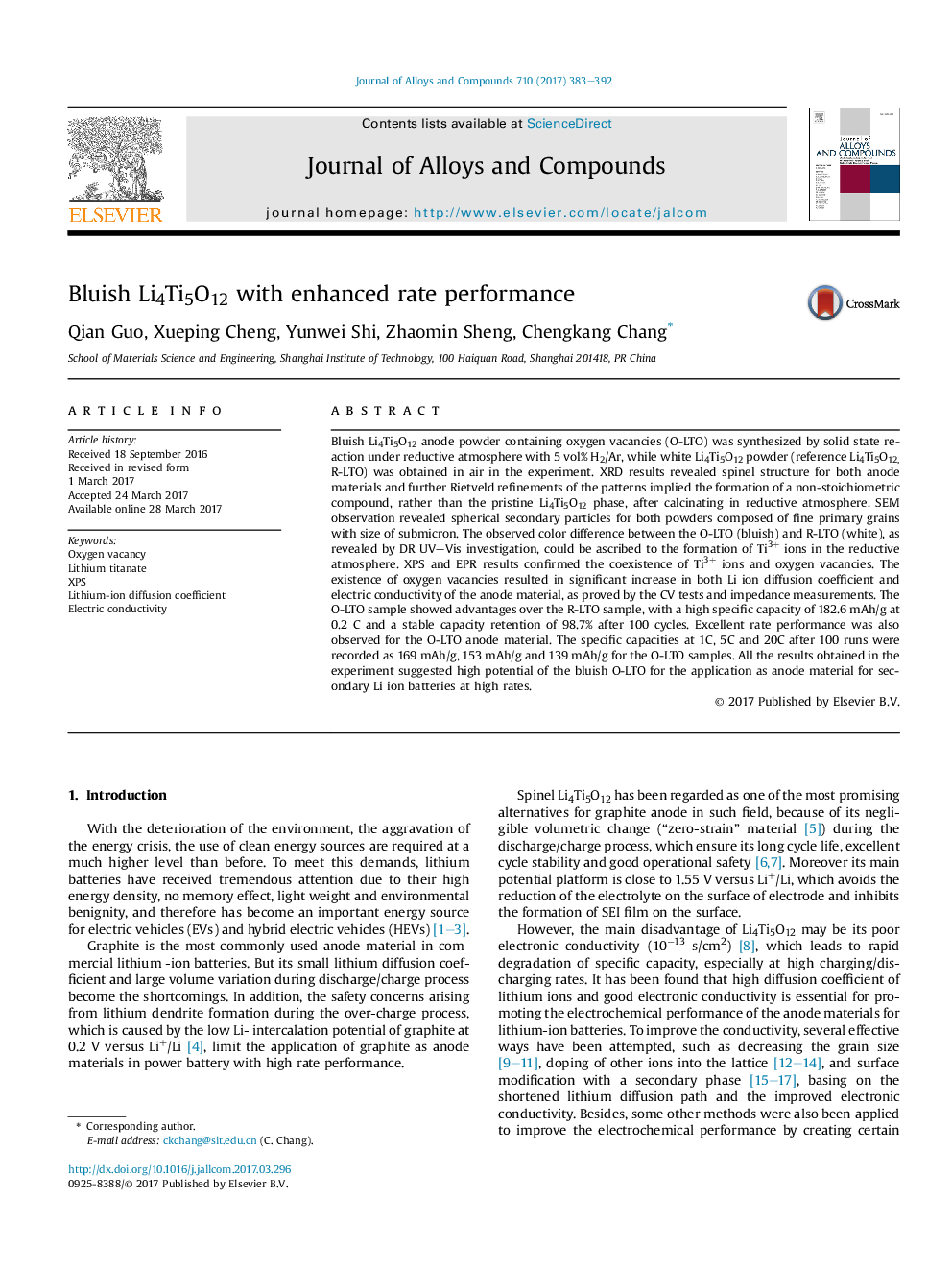| Article ID | Journal | Published Year | Pages | File Type |
|---|---|---|---|---|
| 5461122 | Journal of Alloys and Compounds | 2017 | 10 Pages |
Abstract
Bluish Li4Ti5O12 anode powder containing oxygen vacancies (O-LTO) was synthesized by solid state reaction under reductive atmosphere with 5Â vol% H2/Ar, while white Li4Ti5O12 powder (reference Li4Ti5O12, R-LTO) was obtained in air in the experiment. XRD results revealed spinel structure for both anode materials and further Rietveld refinements of the patterns implied the formation of a non-stoichiometric compound, rather than the pristine Li4Ti5O12 phase, after calcinating in reductive atmosphere. SEM observation revealed spherical secondary particles for both powders composed of fine primary grains with size of submicron. The observed color difference between the O-LTO (bluish) and R-LTO (white), as revealed by DR UV-Vis investigation, could be ascribed to the formation of Ti3+ ions in the reductive atmosphere. XPS and EPR results confirmed the coexistence of Ti3+ ions and oxygen vacancies. The existence of oxygen vacancies resulted in significant increase in both Li ion diffusion coefficient and electric conductivity of the anode material, as proved by the CV tests and impedance measurements. The O-LTO sample showed advantages over the R-LTO sample, with a high specific capacity of 182.6Â mAh/g at 0.2Â C and a stable capacity retention of 98.7% after 100 cycles. Excellent rate performance was also observed for the O-LTO anode material. The specific capacities at 1C, 5C and 20C after 100 runs were recorded as 169Â mAh/g, 153Â mAh/g and 139Â mAh/g for the O-LTO samples. All the results obtained in the experiment suggested high potential of the bluish O-LTO for the application as anode material for secondary Li ion batteries at high rates.
Related Topics
Physical Sciences and Engineering
Materials Science
Metals and Alloys
Authors
Qian Guo, Xueping Cheng, Yunwei Shi, Zhaomin Sheng, Chengkang Chang,
